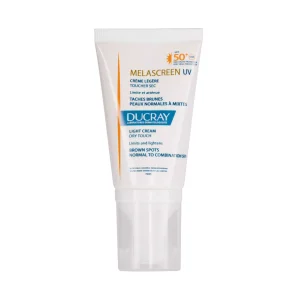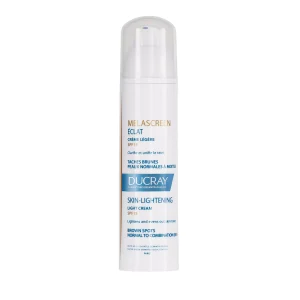
In a world where flawless skin is not just a desire but a demand, the quest for hyperpigmentation best practices has never been more intense. Say farewell to those stubborn dark, uneven spots and dive into the ways of achieving flawless skin that not only turns heads but boosts your self-assurance. Get ready to discover the path to luminosity in this article from The Dermo Lab in collaboration with the dermatologist Dr. Jihan Ghali.
Understanding hyperpigmentation
Before exploring the best practices, it’s important to understand the concept of hyperpigmentation. It’s a common skin condition characterized by an overproduction of melanin, the pigment responsible for the color of skin, hair, and eyes. This excess of melanin leads to the formation of dark spots, patches, or uneven skin tone. To better understand hyperpigmentation, it’s essential to explore its causes:
- Sun exposure: Prolonged exposure to the sun’s harmful ultraviolet (UV) rays is one of the main causes of hyperpigmentation. UV rays can trigger melanin production in the skin as a defense mechanism against damage. This can lead to the appearance of freckles, sun spots, and a general darkening of the skin.
- Hormonal changes: Fluctuating hormone levels, such as those seen during pregnancy, menopause, or when taking the contraceptive pill, can lead to a specific type of hyperpigmentation known as melasma. Melasma often appears as large, dark, irregularly shaped spots on the face.
- Inflammation: Inflammatory skin conditions, such as acne and eczema, can trigger post-inflammatory hyperpigmentation (PIH). Post-inflammatory hyperpigmentation is the result of the skin’s reaction to inflammation, with dark marks or spots persisting long after the initial condition has healed.
- Skin trauma: Any form of skin injury, including cuts, burns, or surgical scars, can lead to hyperpigmentation. This type of pigmentation is known as post-traumatic hyperpigmentation.
Best practice #1: sun protection as a shield
Our quest for perfect skin begins with an essential practice: sun protection. The sun’s UV rays contribute significantly to hyperpigmentation. That’s why daily use of sunscreen with a high SPF (sun protection factor) is non-negotiable. Opt for a broad-spectrum sunscreen that protects against both UVA and UVB rays. Remember, prevention is the first line of defense against hyperpigmentation.
Dr. Jihan Ghali points out that we often only think about sun protection when it’s sunny outside. But we need to protect our skin even when there’s no sun or clouds because the UV index can still cause lasting damage. She adds that, according to the Skin Cancer Foundation, cloud cover only filters out around 20% of UV rays, which means that even in bad weather, you’re still exposed to 80% of the sun’s harmful rays, and are still at risk of sunburn, skin damage and even skin cancer.
Dr. Jihan Ghali indicates that every time your skin is damaged by the sun, it can cause mutations in your cells, which can lead to malignant tumors.
Our sunscreen choice:
Ducray Melascreen UV Light Cream SPF50+
Best practice #2: the power of topical treatments
To combat existing hyperpigmentation, topical treatments are invaluable. Look for products containing active ingredients such as:
- Hydroquinone: A proven lightening agent that inhibits melanin production.
- Vitamin C: An antioxidant that helps fade dark spots and lighten skin.
- Retinoids: Known for their cell renewal properties, they promote skin renewal and pigmentation reduction.
- Niacinamide (vitamin B3): Reduces inflammation and helps even out skin tone.
Consult a dermatologist to determine the treatment best suited to your skin type and condition, and always follow his or her instructions for optimal results.
Here are 2 creams that contain active depigmenting ingredients and are ideal for reducing and unifying skin tone.
Ducray Melascreen Depigmenting Intensive Care (intensive care for 3 to 6 months)
Ducray Melascreen Eclat Light Cream SPF15 (as a follow-up or right from the start, because it lightens and evens your skin tone)
Best practice #3: chemical peels for a fresh start
Chemical peels are a popular cosmetic procedure that can significantly improve hyperpigmentation. They exfoliate the upper layers of the skin, revealing smoother, more even skin. Depending on the severity of your hyperpigmentation, you can opt for gentle peels such as glycolic acid or more intense options such as TCA (trichloroacetic acid) peels. These treatments must be administered by qualified professionals for reasons of safety and efficacy.
Best practice #4: the miracle of micro-needling
Microneedling is another revolutionary treatment for hyperpigmentation. It uses tiny needles to create micro-lesions in the skin, stimulating collagen production and helping to reduce the appearance of dark spots and uneven skin tone. The process can also improve the absorption of topical treatments, making it a powerful combination for achieving radiant skin.
Best Practice #5: Holistic healing through diet and lifestyle
While external treatments are essential, the importance of a holistic approach should not be overlooked. A balanced diet, rich in antioxidants, vitamins, and minerals, can promote skin health. Foods such as berries, green leafy vegetables, and oily fish can help combat inflammation and promote skin regeneration.
Stress management is also essential, as chronic stress can exacerbate skin problems, including hyperpigmentation. Adopt relaxation techniques such as meditation, yoga, or deep breathing exercises to promote your overall well-being.
Best practice #6: Seek professional help
In severe cases of hyperpigmentation, or if home treatments don’t produce the desired results, it’s a good idea to seek professional help. Dermatologists can offer personalized treatment plans tailored to your skin problems. Options such as laser therapy, intense pulsed light (IPL), and prescription medications may be recommended to treat stubborn hyperpigmentation.
Best practice #7: patience and consistency
Achieving flawless skin with hyperpigmentation best practices requires patience and consistency. Results may not be immediate, and it’s essential to follow your skin care program diligently. Remember, hyperpigmentation often takes time to fade, but with the right practices, your skin will gradually transform.
Remember that hyperpigmentation varies from person to person, and what works best for one person may not be as effective for another. It’s essential to be patient and consistent with your chosen skincare regime and to consult a dermatologist in the event of persistent or severe hyperpigmentation. By following these practices, you can achieve the radiant, even skin you desire.
Radiant skin awaits you
Hyperpigmentation can be a daunting challenge, but armed with the right knowledge and best practices, you can beat it. From regular sun protection to advanced treatments such as chemical peels and microneedling, the path to flawless skin is within your reach.
Adopt these best practices, consult skincare experts, and stay committed to your journey towards radiant, even-toned skin. Every step you take brings you a little closer to the confidence and luminosity you’ve been waiting for beneath the surface. Say goodbye to hyperpigmentation and hello to a brighter future!
Last Updated on February 16, 2024











